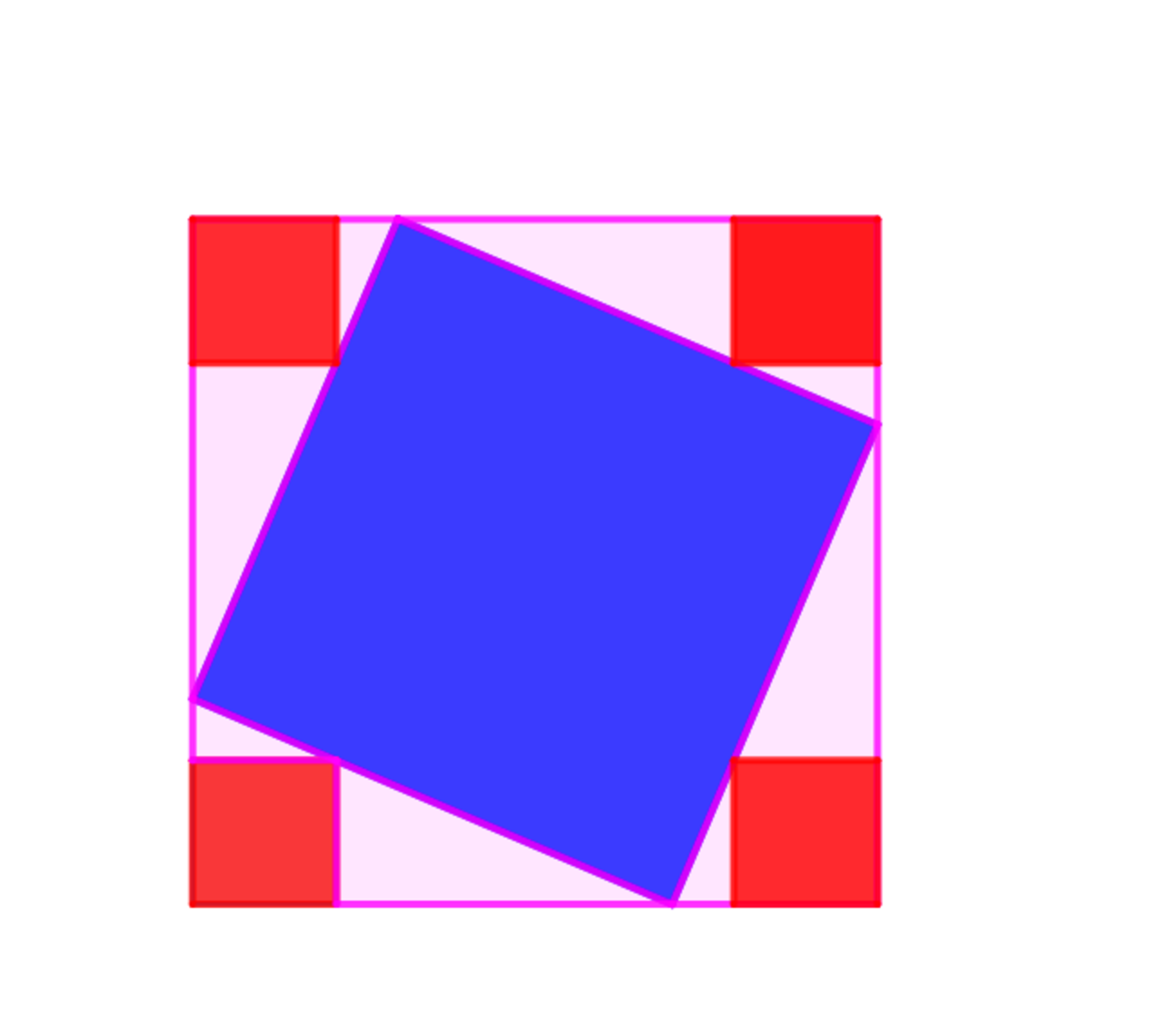It's All Squares
The problem below is a brillant problem of the week that I slightly modified.

The blue square touches each side of the largest square and each of the 4 red squares at the corners of the largest square touch the blue square and the largest square is a unit square.
The unit square is the square in the Cartesian plane with corners at the four points , and .
Let .
If is a side of the blue square and the sum of the areas of the red squares are
(1): Find the value of .
Let .
(2): Find the coordinates , where each of the 4 red squares at the corners of the largest square touch the blue square.
Find to eight decimal places.
The answer is 0.02751975.
This section requires Javascript.
You are seeing this because something didn't load right. We suggest you, (a) try
refreshing the page, (b) enabling javascript if it is disabled on your browser and,
finally, (c)
loading the
non-javascript version of this page
. We're sorry about the hassle.
Let the side of the largest square have a length of 1 .
⟹ 1 = 2 y ( 1 − y ) + c 2 ⟹ 2 y 2 − 2 y + 1 − c 2 = 0 ⟹ y = 2 1 ± 2 c 2 − 1 where y 1 = 2 1 + 2 c 2 − 1 and y 2 = 2 1 − 2 c 2 − 1 and ( 2 1 < c < 1 ) .
Using similar right triangles below we obtain:
x y 1 − x = y 2 − x x ⟹ y 1 y 2 − ( y 1 + y 2 ) x + x 2 = x 2 ⟹
x = y 1 + y 2 y 1 y 2 = 2 1 − c 2 ⟹ A = 4 ( 2 1 − c 2 ) 2 = ( 1 − c 2 ) 2 = c 4 + 1 − ( 2 2 + 1 ) 2
⟹ 1 − 2 c 2 + c 4 = c 4 + 1 − ( 2 2 + 1 ) 2 ⟹ 2 c 2 = ( 2 2 + 1 ) 2 ⟹ c = 2 2 2 + 1 .
For each ( x j , y j ) , where ( 1 ≤ j ≤ 4 ) :
The coordinates of the four points are: ( x , x ) , ( 1 − x , x ) , ( x , 1 − x ) , ( 1 − x , 1 − x ) ⟹ ∏ j = 1 4 x j = ( x ( 1 − x ) ) 2 = ( ( 2 1 − c 2 ) ( 2 1 + c 2 ) ) 2 = 1 6 1 ( 6 4 4 7 − 1 2 2 ) 2
= ∏ j = 1 4 y j ⟹ ∏ j = 1 4 x j + ∏ j = 1 4 y j = 8 1 ( 6 4 4 7 − 1 2 2 ) 2 ≈ 0 . 0 2 7 5 1 9 7 5 .